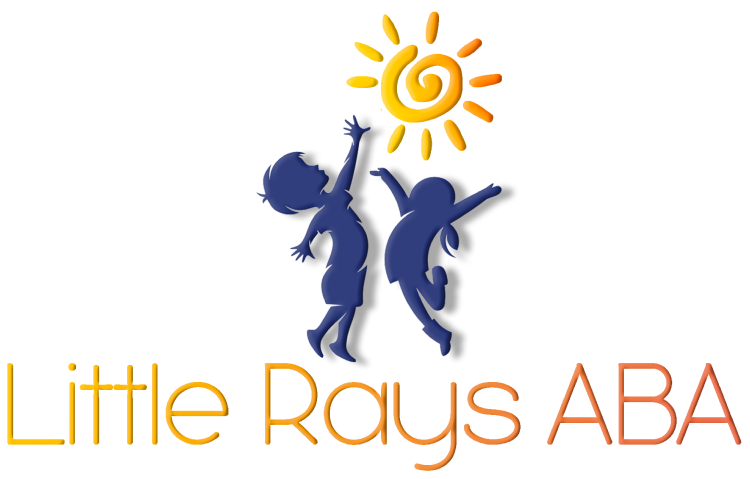Autism and OCD: Tips for Support and Treatment
Autism spectrum disorder (ASD) and obsessive compulsive disorder (OCD) are two distinct conditions that influence behavior and mental health in unique ways. ASD is a developmental condition that primarily impacts social communication, while OCD is characterized by intrusive thoughts and compulsive behaviors. While both disorders can share similarities, they differ significantly in triggers and outcomes. Understanding the interplay between these conditions is vital for developing the correct support and treatment strategies, which can positively influence mental health outcomes for affected individuals.
Understanding Autism and OCD
Comprehending the differences between autism spectrum disorder and obsessive compulsive disorder is essential for accurate diagnosis and intervention. While they may present overlapping symptoms, they stem from different sources—ASD being a developmental condition and OCD a mental health disorder.
Both conditions can exhibit repetitive actions, restrictive behaviors, and difficulty navigating social environments. However, ASD’s behaviors are often soothing or purposeful, whereas OCD’s compulsions are anxiety-driven. Healthcare professionals must carefully distinguish these traits for tailored support and effective treatment approaches.
Defining Autism Spectrum Disorder (ASD)
Characterized as a developmental condition, autism spectrum disorder (ASD) encompasses a range of symptoms that vary widely among individuals. Key facets include challenges in social communication, difficulty interpreting social cues, and the presence of repetitive behaviors or interests. Autistic individuals often navigate the world uniquely, experiencing sensory stimuli in ways that can lead to sensory overload. Diagnostic criteria established by the American Psychiatric Association facilitate the recognition of autism spectrum disorders. Understanding these aspects is critical for tailoring effective mental health services and interventions, particularly as recent studies emphasize the importance of early diagnosis and targeted support for autistic children and young people.
Overview of Obsessive-Compulsive Disorder (OCD)
Obsessive-compulsive disorder (OCD) is characterized by intrusive thoughts and compulsive behaviors that significantly disrupt daily life. Individuals grappling with OCD often experience intense anxiety when they perceive a lack of control over these obsessive thoughts, leading them to perform rituals as a coping mechanism. Common compulsions include repetitive actions, such as checking or cleaning, aimed at alleviating the distress caused by intrusive thoughts. The condition affects both young people and adults and is classified under anxiety disorders. Understanding the diagnostic criteria outlined by the American Psychiatric Association is crucial for effective treatment, which may involve cognitive behavioral therapy (CBT) and medication options like selective serotonin reuptake inhibitors.
Signs and Symptoms in Autism and OCD
Symptoms of autism and OCD often overlap but originate from distinct contexts. Autism frequently involves repetitive behaviors for sensory purposes, while OCD involves compulsions to alleviate anxiety.
For individuals on the autism spectrum, symptoms may include a heightened sensitivity to sensory input like lights or sounds. OCD, on the other hand, often features intrusive fears and ritualistic actions centered around relieving distress. Recognizing these unique signs enables caregivers and clinicians to provide targeted support.
Identifying Autism in Individuals
Autism spectrum disorder manifests through traits such as repetitive behaviors, difficulty processing sensory experiences, and challenges with social connections. Behaviors like hand-flapping or spinning are common and served to provide comfort or regulate emotions.
For autistic individuals, sensory experiences can be heightened or even overwhelming. Bright lights, loud noises, or particular textures may elicit distress or aversion. Such reactions define one’s interaction with their environment.
Social challenges are another hallmark of autism. Trouble understanding social cues, facial expressions, or conversational nuances can lead to isolation. Early intervention programs focused on social skill training and sensory integration provide supportive frameworks, helping individuals navigate daily life more effectively.
Recognizing OCD Symptoms
Obsessive-compulsive disorder symptoms revolve around cycles of anxiety-inducing obsessions and compulsive behaviors. While many people have occasional irrational thoughts, OCD manifests through compulsions like frequent hand-washing, excessive organization, or repetitive checking rituals.
OCD falls under anxiety disorders and is marked by fears that often feel uncontrollable. Someone may repeatedly perform acts to alleviate intrusive thoughts about contamination or harm. For example, a compulsive urge to flick a light switch multiple times to avoid imagined harm may emerge.
Unlike autism, which seeks pleasure through repetitive actions like stimming, OCD rituals are anxiety-driven and devoid of enjoyment. Addressing OCD symptoms through therapy, medication, and emotional support enhances coping skills, including strategies for breaking the compulsion cycle.
The Interplay Between Autism and OCD
Autism and OCD frequently interact, creating complex challenges for affected individuals. Sensory stimuli often trigger behaviors in autism, while OCD-driven actions stem from overwhelming anxiety.
Autistic individuals may experience OCD compulsions more intensely due to heightened sensory sensitivities. This dynamic emphasizes the need for specialized care, ensuring both conditions are managed simultaneously and effectively.
How Autism Influences OCD Symptoms
Sensory stimuli and behavioral patterns in autism can significantly impact how OCD symptoms present. In an autistic individual, sensory overload from bright lights or loud sounds may amplify OCD compulsions related to reducing anxiety.
While autism-related repetitive actions stem from comfort or sensory input, OCD compulsions often involve distressing, irrational fears. This overlap may lead to confusion during diagnosis and treatment planning.
Providers must adapt interventions to address the needs of individuals experiencing both conditions. A blend of therapies targeting sensory regulation and anxiety alleviation proves effective for these unique cases.
The Impact of OCD on Autistic Individuals
Obsessive-compulsive disorder can heighten difficulties in social interaction for autistic individuals. Compulsions may interfere with routines, causing additional stress and complicating day-to-day functioning.
Social stigma surrounding OCD symptoms, such as repeated hand-washing or ritualistic behaviors, may lead to isolation in autistic individuals already struggling with communication gaps. Sensory overload can exacerbate compulsive tendencies, further disrupting their coping mechanisms and mental health.
Supportive interventions focusing on social skills and sensory relief are crucial. Tailoring therapy to address combined challenges improves well-being and nurtures self-reliance.
Diagnostic Challenges and Considerations
Differentiating autism traits from OCD symptoms poses significant diagnostic challenges. Given similarities like repetitive behaviors, clinicians must carefully navigate diagnostic criteria to avoid misdiagnosis.
When ASD and OCD co-occur, symptoms can mask one another, complicating both identification and treatment. Accurate assessment considers individual experiences, ensuring clinicians understand whether routines stem from enjoyment (autism) or fear (OCD).
Differentiating Between ASD and OCD Traits
Autism spectrum disorder and OCD involve traits such as repetitive behaviors, obsessive interests, and difficulty processing social cues, but distinguishing between them is nuanced. OCD is characterized by distressing compulsions, like repeated actions to avert harm, while autism-related repetitions provide sensory stimulation.
Diagnostic criteria focus on identifying specific symptoms. For instance, stimming in autism is soothing, whereas OCD rituals alleviate anxiety related to intrusive thoughts. Misdiagnosis occurs when professionals overlook these distinctions.
Accurate diagnosis relies on interviews, behavioral observations, and knowledge of the individual’s experiences. Personalized assessments ensure proper treatments are implemented.
Common Misdiagnoses and Their Consequences
Misdiagnosing OCD as autism—or vice versa—can deprive individuals of effective treatment. Overlapping symptoms such as rigid routines or obsessive behaviors complicate diagnostic clarity.
Clinicians must differentiate traits accurately to avoid prescribing therapies unsuitable for the individual’s challenges. For example:
| Trait | Autism | OCD |
|---|---|---|
| Repetitive behaviors | Sensory satisfaction | Anxiety relief |
| Obsessive tendencies | Intense focus on interests | Intrusive, unwanted thoughts |
| Social challenges | Difficulty decoding facial cues | Discomfort with social interactions |
Misdiagnosis can lead to untreated mental health needs. Emphasizing comprehensive evaluations prevents prolonged distress and ensures access to tailored interventions.
Treatment Approaches for Autism and OCD
Managing autism and OCD involves individualized therapies and medical intervention. Both conditions benefit greatly from cognitive behavior therapy (CBT) and medications when appropriate.
For autism, sensory-based support coupled with social skill development addresses core needs. OCD treatments focus on exposure therapy and SSRIs. Integrating approaches ensures improved outcomes for individuals navigating both disorders.
Behavioral Therapies for ASD
Behavioral interventions for autism spectrum disorder focus on strengthening coping skills, enhancing social communication, and managing sensory experiences. Common approaches include:
- Cognitive Behavioral Therapy (CBT): Addresses emotional regulation and thought patterns.
- Social Skills Training: Improves interactions and understanding of social cues.
- Sensory Integration Therapy: Reduces distress from sensory overload.
Therapies tailored to autistic individuals provide tools to navigate their environment effectively. Early intervention programs significantly enhance an individual’s ability to connect and thrive in social and professional settings.
Medication and Therapy Options for OCD
Obsessive-compulsive disorder treatment involves a multi-pronged approach combining psychotherapy and medications. Effective options include:
- Cognitive Behavior Therapy (CBT): Targets irrational fears and gradually lessens compulsive behavior.
- Selective Serotonin Reuptake Inhibitors (SSRIs): Medications to manage intrusive thoughts and anxiety associated with OCD.
- Exposure and Response Prevention Therapy (ERP): Encourages gradual exposure to fears without performing rituals.
Medication and therapy complement one another, providing relief from OCD’s exhausting compulsions. Monitoring treatment plans ensures individuals build resilience and regain control of their daily lives.
Support Systems and Coping Strategies
Individuals managing autism and OCD thrive when supported by well-organized systems. Families play a pivotal role in fostering understanding, while community resources can offer guidance.
Workplace and educational accommodations ensure accessibility, empowering individuals to succeed in a structured environment tailored to their unique needs. Together, these strategies nurture resilience and independence.
Role of Family and Community in Support
Family support is crucial for autistic individuals and those navigating OCD symptoms. Loved ones provide emotional stability and aid in accessing relevant mental health services. For instance, families can connect affected individuals with community resources and support groups for tailored interventions.
Communities also serve as vital networks of encouragement. Autism-specific centers or OCD organizations foster connections, helping individuals feel less isolated. Mental health services adapted to individual needs bridge gaps in treatment implementation.
A cohesive support system ensures individuals receive compassionate help, paving the way for self-reliance and improved mental well-being.
When seeking effective support for children with both autism and OCD, in-home ABA therapy near me can be a game-changer. Personalized therapy in a familiar environment allows for targeted interventions that address specific behavioral and emotional challenges. Whether your child is navigating OCD-related rituals or autism-related social difficulties, in-home ABA therapy provides the flexibility and consistency needed to make meaningful progress. If you’re looking for expert guidance and customized treatment, reach out today to explore how in-home ABA therapy can be the key to your child’s success.
Educational and Workplace Accommodations
Accommodating autism and OCD in education or workplaces is indispensable. Adjustments such as sensory-friendly time slots, quiet spaces, and tailored tasks enhance accessibility for individuals on the autism spectrum.
In schools, personalized learning plans ensure students with OCD or autism thrive academically despite unique hurdles. Accommodations like extended deadlines and alternative communication methods minimize stress and foster inclusion.
Workplaces also benefit from adjustments like flexible schedules or modified responsibilities. Promoting understanding among colleagues and offering sensory-friendly settings allows affected individuals to pursue careers without undue pressure.
Conclusion
In conclusion, navigating the complexities of both Autism Spectrum Disorder (ASD) and Obsessive-Compulsive Disorder (OCD) can be challenging, but understanding their interplay is crucial for effective support and treatment. By recognizing the signs and symptoms unique to each condition, families and caregivers can better differentiate between ASD and OCD traits, ensuring accurate diagnoses that lead to appropriate interventions. Effective treatment often involves a combination of behavioral therapies and medication tailored to individual needs, alongside robust support systems from family, community, and educational institutions. The journey may be daunting, but with the right strategies and a comprehensive understanding of both conditions, individuals can thrive. For those seeking further guidance, don’t hesitate to reach out for resources and support tailored to your unique situation.
At Little Rays ABA, we understand the unique challenges that come with managing both autism and OCD. Our experienced team specializes in providing individualized ABA therapy to help children manage OCD symptoms while fostering growth in key areas like communication and social skills. Through tailored strategies and compassionate support, we empower children and families to navigate the complexities of both conditions. Ready to see how ABA therapy can make a difference for your child? Contact Little Rays ABA today and take the first step toward a brighter future.
Frequently Asked Questions
Can someone have both Autism and OCD?
Yes, individuals can experience comorbidity between autism and OCD. Research indicates overlapping traits due to sensory sensitivities or rigid routines. Diagnostic criteria account for this interplay, ensuring accurate identification and intervention for the unique challenges presented by these conditions.
How do treatments differ for Autism vs. OCD?
Treatment approaches vary significantly. Cognitive behavioral therapy (CBT) is effective for both, but autism strategies focus on sensory integration and social skills training, while OCD requires exposure therapy and SSRIs. Tailoring treatments ensures effective management of each condition’s distinct needs.
What are the common signs of OCD in someone with Autism?
OCD symptoms in autistic individuals may include compulsive behaviors like repetitive checking or counting, arising due to anxiety. These behaviors differ from autism-related stimming, which offers sensory satisfaction. Social cues may exacerbate OCD-linked rituals, highlighting the intersection of these conditions.
Where can families find support for both conditions?
Families can access resources through mental health services, support groups, or community organizations catering to autism and OCD. Educational accommodations, local branches, and specialized therapists offer assistance tailored to each individual’s needs, encouraging growth and resilience.
Sources
- https://iocdf.org/about-ocd/
- https://www.medicalnewstoday.com/articles/ocd-vs-autism
- https://www.ncbi.nlm.nih.gov/books/NBK525976/
- https://www.mind.org.uk/information-support/types-of-mental-health-problems/obsessive-compulsive-disorder-ocd/ocd-and-stigma/
- https://www.apa.org/ptsd-guideline/patients-and-families/cognitive-behavioral
- https://www.mayoclinic.org/diseases-conditions/depression/in-depth/ssris/art-20044825
- https://iocdf.org/about-ocd/treatment/erp/
Related Posts





